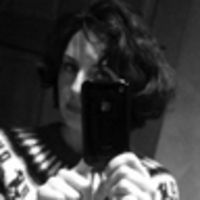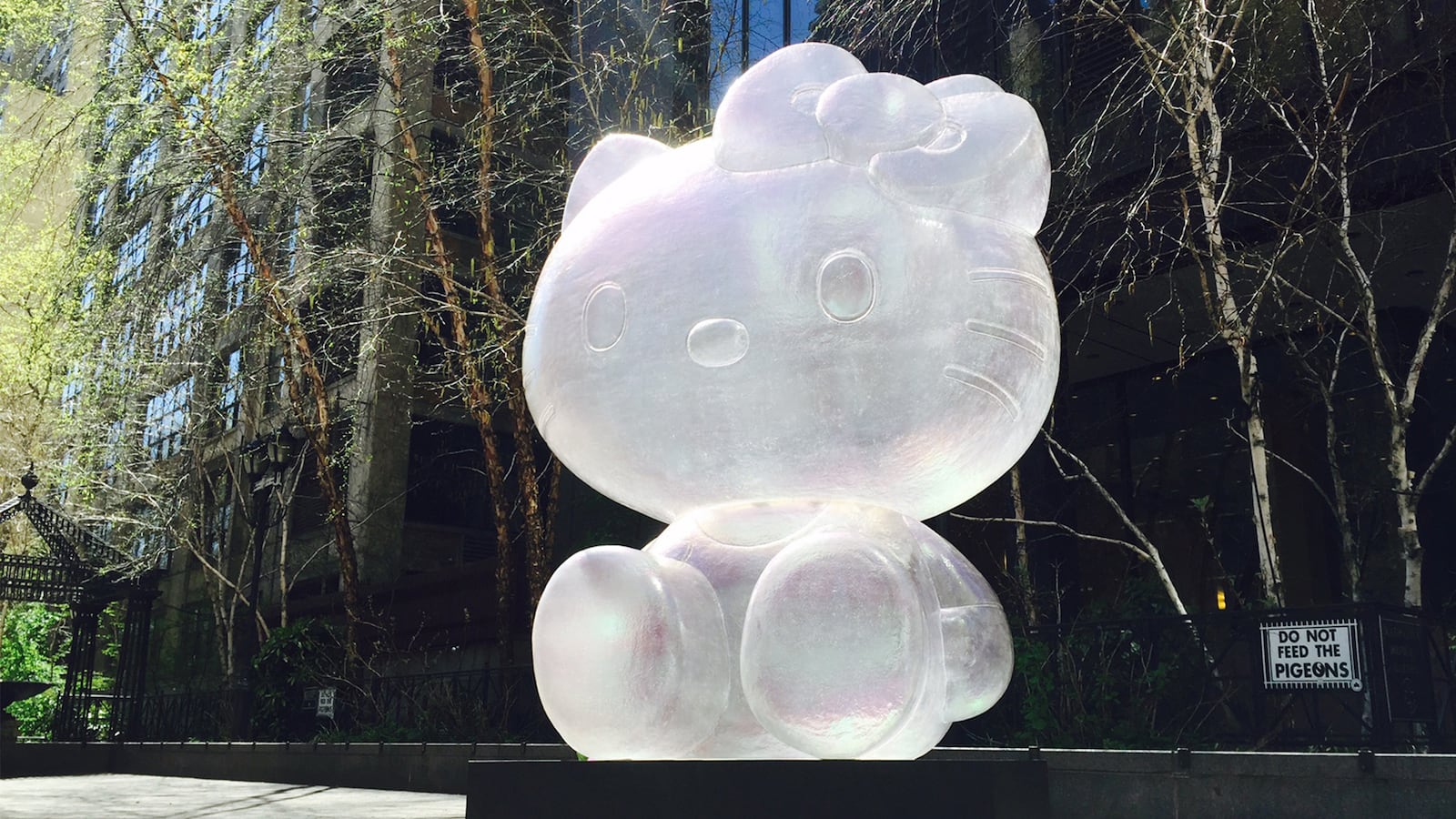Imagine diving into a children’s playpen filled with millions of colorful balls. Or waking up in a room decked from floor to ceiling in plastic toys and bundles of fake fur, with an oversized teddy bear laying with its head flopped against a bed, in a sort of psychedelic dream room, accentuated with rainbow overtones.
Picture this and you have stepped inside the playful world of Japan’s most vibrant artist, fashion designer and ambassador of cute, Sebastian Masuda, whose work is synonymous with the Harajuku fashion district in Tokyo where he has a cult shop, 6%DOKIDOKI, filled with toys, clothing, accessories and other items in keeping with Japan’s ‘Kawaii’ (cute) culture, which Masuda has helped spread at home and overseas.
Think all things Hello Kitty, as well as silly clothing like frilly shorts and the general penchant amongst Japanese youth for cute.
Once traveling the globe as an ambassador for Kawaii, Masuda now also travels with his art which he began creating about the same time as he opened the store.

Now he has bought his art to New York, where—just outside the Japan Society on 47nd Street and 2nd Avenue—he has constructed a 9-foot tall, translucent Hello Kitty. (The Sanrio company created Hello Kitty in 1974; the character first came to the U.S. in 1976.)
Masuda is inviting the city’s inhabitants to fill the object with personal objects, to color this translucent monument to Japanese cuteness.
The Time After Time Capsule, as it is called, is on view from April 29 until September 13, 2015, in Dag Hammarskjold Plaza. It is also about making New York and Masuda’s work part of something bigger.
The capsule is part of a multi-city project that has previously taken place in Miami and Amsterdam, as well as in New York in other guises.
For all of these projects, Masuda involves children and families through workshops, creating bright and cheerful designs, using personal belongings as well as cute objects from his store 6%DOKIDOKI. All of the capsules and their contents will eventually be united in 2020 in Tokyo to mark the Tokyo Olympics.
He had his first solo U.S. exhibition “Colorful Rebellion” in Chelsea last year when visitors could step inside the universe described above.
For the show, Kianga Ellis Projects asked Masuda to create a weird colorful dreamland filled with silly accoutrements like some of the items for sale in his shop. He even dressed the part and posed like a maverick Charlie Chaplin, wearing polka dot trousers and a purple velvet jacket and furry hat.
Born in 1970, Masuda worked in the theater industry before opening the store and then getting into art. Today, Masuda still works as an art director for the Japanese pop sensation, Kyary Pamayu Pamayu. He directed her psychedelic Pon Pon Pon video which went viral.
Many of the items used in the video were from his store.
The artist puts his career and love of toys, which he has collected from China to America, on being left to play in his parent’s shop when he was a child.
“My family ran a shop in a local shopping street. Since my parents were so busy, a toy shop in the street was my playground,” he said. “It was my precious time to play with showers of colors and characters on the packages. Also I had trouble with my ears and couldn’t hear until I was five years old, so the information through my eyes was everything and structured my world. This experience is my resource for my creation.”
Masuda opened 6%DOKIDOKI in 1995 as a type of gallery to show the craziest designs from all over the world, he said. And he has been behind the empowerment of cute girl-and youth-culture ever since and made it his mission to encourage people to recall childlike wonder, everywhere. He started the Global Kawaii tour in 2009 to that end.
“I started this small shop in Harajuku and it became representative of fashion in Tokyo,” he said. “Now clients are coming from all over the world. I was surprised that this includes some celebrities from the West Coast and Europe that came to my small shop in their fancy giant limousines,” he said.
And if you have ever wondered what inspires this culture in Japan, he can explain.
“Kawaii is not necessarily cute,” he said. “My creation is sometimes categorized as Kawaii style from Harajuku, an area where they dress up with crazy colors and come from all over the country to Harajuku,” he said. “Their style is neither for other people or for attracting the opposite sex,” he said. “It’s a statement to show resistance to the current social environment.”
He likes to compare Kawaii to Flower Power. “I believe this phenomenon is more similar to the Hippie culture from the West Coast or the Punk culture from the 1960’s in London,” he said.
He sees these fashions as a form of expression. “Wearing something childish, funky or silly is a statement to show resistance to the current social environment. Instead of using words, they show their thought through fashion,” he said. “Not all people can interpret the language of fashion, so to reach a broad audience, I started challenging as well through art.”
Harajuku is of course an area in Tokyo known internationally as a center of Japanese youth culture and fashion that attracts young people. It is around the corner from the luxury shopping drag, Omotesando.
Everything, including his fashion designs, began with the shop there. But the development has been organic.
“My role in this culture is that through running my shop 6%DOKIDOKi, it became a hub to communicate,” he said. “I started 6%DOKIDOKI as a gallery space to show something crazy from all over the world. And my fans started wearing these objects, for example room curtains. Then I started making wearable items for them.”
Long before he opened the shop, he was drawn to the area. “Back in the 1980s, there was a pedestrian paradise in Harajuku. Many dance groups known as Takenoko-zoku were performing on the street. It was nothing professional, anyone could dance. Many of the kids were drop-outs or rogues. However, it was really fun to see because it was so free and filled with youth culture and passion. So I took the train every weekend to see them,” he said.
There were huge queues for his other New York show, and a great desire on peoples’ part, he says, to see color.
Some of his projects aren’t as cute as they look. Some have darker undertones. “Colorful Rebellion Seventh Nightmare,” which went on to show in Miami and at the Tokyo Design Week in Milan 2015, is an example. The show included so-called ‘zones’ for future, delusion, fate, wounds, and reality based on the seven sins.
“The small room was filled with flood of colors. When people opened the door, they gasped at the view,” he said. “Once they got into the room, they were spending a long time inside. The interesting thing was that many people kept coming back to the show. Many of them said when they first saw the room that they thought it was about Kawaii. Then after they spent some time there, they started feeling insanity and scared.”
For this latest 9-foot ‘Hello Kitty’ project, Masuda says, “I came up with the idea of a giant time capsule in the city to explore ideas like, ‘What is your color, what’s your hope, or let’s share the future with the others?’”
His projects can seem bizarre, of course.
“I never thought of myself as being crazy,” says Masuda. “However, because I don’t care what I have achieved in my past and just try whatever is next, maybe that’s the part where people say, ‘Sebastian is crazy.’”






